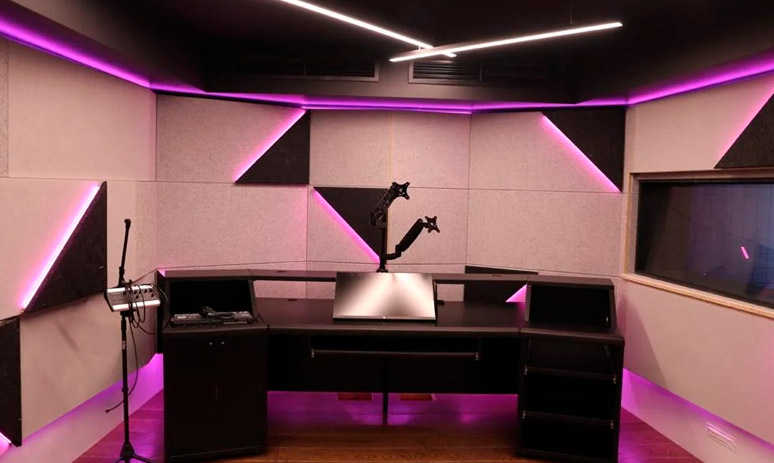Acoustics of Audio Recording Studios

Although studios can be very large rooms, the vast majority of studios that are currently being built have a total area of the tone hall and the control room less than 200 sq. m. The era of mega-studios is over; modern recording equipment, which allows you to record audios with the highest level of quality, now fits in two suitcases. At the same time, the physical principles of sound propagation in rooms have unfortunately remained unchanged.
For a studio to produce a really high-quality and natural product, the hall and control room must have the necessary, different from each other acoustic design.
First, in spite of however small dimensions, in these rooms, there should be no problems with recording and reproducing low frequencies. In the case of a tone hall, problems at low frequencies simply will not allow you to correctly record instruments with a "playing low frequencies": drums or basses. In the control room, an uncontrollable bass will cause the soundtrack released by the studio to sound completely unnatural in all other places. That is why, during the construction of studios, so much attention is paid to the choice of the shape and proportions of the premises, and after performing sound insulation work, a sufficiently large amount of time is given to correcting the sound field at low frequencies.
For a control room, depending on its destination (stereo or multichannel sound recording), there are also requirements for placement of sound-absorbing and sound-scattering materials. It is important to remember that, if such a room has its own well-pronounced sound, in other rooms the phonogram mixed there may sound quite differently. So, one of the most common methods of arranging control rooms is creating a neutral acoustic environment within the premises. A low reverberation time is combined with the requirement of its invariance (flat characteristic) within the entire frequency range.
When designing premises for recording studios, the following principles should be observed:
- The shape and proportions of the premises of the tone hall and the control room should be selected on the basis of the physical principles of sound propagation in confined spaces. The best proportion of room sizes is the "golden section": 1:0.62:0.38. The worst option is a cubic proportion - 1:1:1.
- For each room, an LF absorber system is developed, which creates a uniform field within the low-frequency range.
- The reverberation time in the rooms must be within the range as recommended for studios of the appropriate size. As a rule, for control rooms of a small area, the reverberation time does not exceed Trev = 0.3 sec.
- The interior of the tone hall and control room shall contain a uniform alternation of sound-absorbing and scattering surfaces. It is allowed to place scattering or reflective surfaces on the front wall of a control room when recording stereo audio.
- Any acoustic defects such as a "fluttering" echo caused by the use of parallel sound-reflecting surfaces should be excluded in the hall.
- The interior decoration of studio premises shall use fireproof, environmentally friendly materials suitable for long-term operation, featuring well-known and stable acoustic characteristics.
